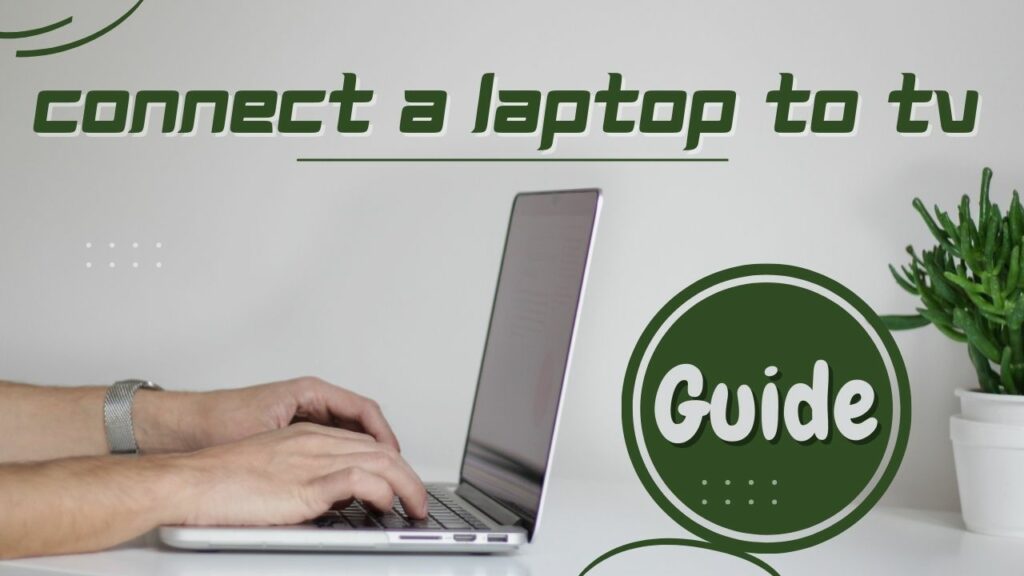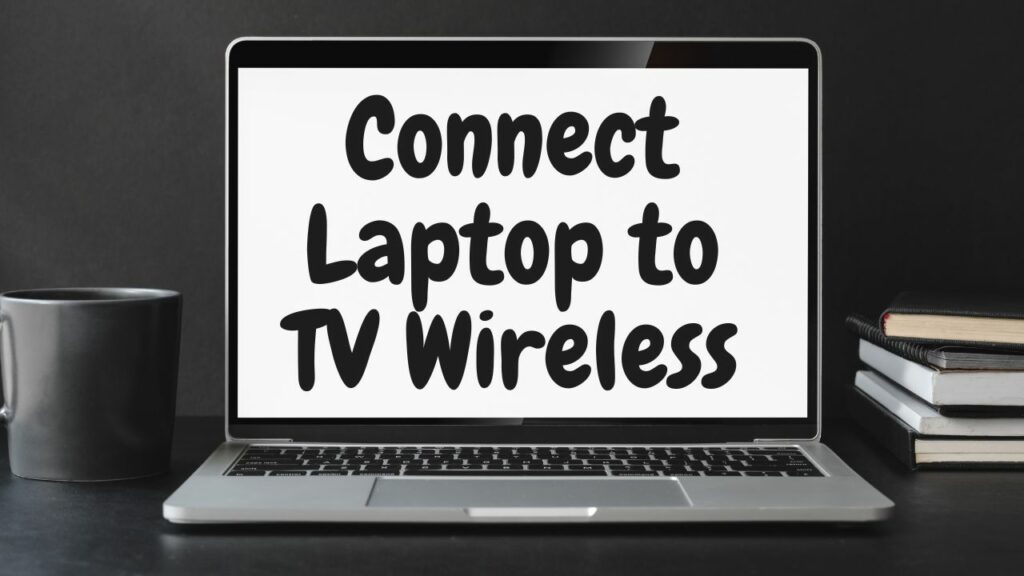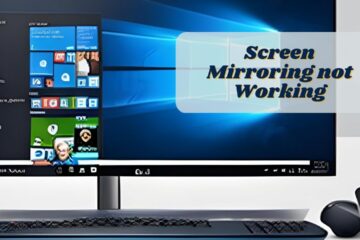Connecting your laptop to your TV can enhance your viewing experience and provide a larger screen for work or entertainment. Whether you want to watch a movie or give a presentation, connecting your laptop to your TV is a convenient option. In this guide, we will provide step-by-step instructions on how to connect a laptop to a TV and troubleshoot common issues.

Connect the Laptop to Your TV- Complete the Procedure
These guided steps will help you connect your laptop to your TV:
Part 1: Check Compatibility
Before connecting your laptop to your TV, check the user manual or the manufacturer’s website for compatibility specifications. Ensure that your laptop and TV have compatible ports and resolutions.
Part 2: Choose a Connection Method
There are different ways to connect your laptop to your TV, including HDMI, VGA, DVI, or wireless. HDMI is the most common and recommended method for high-quality audio and video.
Part 3: Connect the Cable
Once you have chosen a connection method, connect the cable from your laptop to your TV. Turn off both devices before connecting the cable.
For HDMI Connection:
- Attach the HDMI cable’s one end to the HDMI port located on your laptop.
- Connect the other end of the HDMI cable to the HDMI port on your TV.
- Turn on your laptop and TV.
- Select the HDMI input on your TV.
For VGA or DVI Connection:
- Connect one end of the VGA or DVI cable to the VGA or DVI port on your laptop.
- Connect the other end of the VGA or DVI cable to the VGA or DVI port on your TV.
- Turn on your laptop and TV.
- Select the VGA or DVI input on your TV.
For Wireless Connection:
- Ensure your laptop and TV are connected to the same Wi-Fi network.
- On your laptop, go to Settings > Devices > Bluetooth and Other Devices > Add Bluetooth or Other Devices.
- Select Wireless Display or Dock from the options.
- Your TV should appear on the list of available devices. Select it to connect.

Part 4: Troubleshooting
If you experience any issues during the connection process, follow these troubleshooting steps:
Troubleshooting No Signal Issues
If you are experiencing no signal issues or TV screen black issues, check the cable connections and make sure the TV input is set to the correct source.
Troubleshooting Blurry Images
If your images are blurry, adjust the resolution and refresh rate settings on your laptop or TV to match the optimal settings.
Troubleshooting No Sound Issues
If you are experiencing no sound, make sure the audio settings are configured correctly, and the volume is turned up.
Part 5: Advanced Options for Connecting a Laptop to a TV
If you want to take your laptop-to-TV connection to the next level, consider these advanced options:
Wireless HDMI
Wireless HDMI allows you to connect your laptop to your TV without using cables. Instead, the signal is transmitted wirelessly through a device that plugs into the HDMI port on both devices.
Miracast
Miracast is a wireless display standard that allows you to stream audio and video from your laptop to your TV. It works similarly to Chromecast but is built into many newer smart TVs.
Smart TV Apps
Many smart TVs come with apps that allow you to stream content directly from your laptop or mobile device. Look for apps like AirPlay, AllShare, or Smart View.
Part 6: Best Practices for Connecting a Laptop to a TV
Here are some best practices to keep in mind when connecting your laptop to your TV:
Keep Your Laptop Charged
It’s a good idea to keep your laptop charged when using it with your TV to ensure that it doesn’t run out of battery during use.
Position Your Devices Carefully
Make sure your laptop and TV are positioned close enough to the cable length for a secure and stable connection. Avoid placing your devices on uneven surfaces or near sources of interference like microwaves, wireless routers, or other electronic devices.
Adjust Settings for Optimal Performance
Ensure that the resolution and refresh rates are optimized for your TV and laptop for the best audio and video quality. You can adjust these settings in the Display settings on your laptop or TV.
Turn Off Your Laptop Screen
To avoid duplicate displays and save battery life, turn off your laptop screen once you have successfully connected it to your TV.
Use a Wired Connection for High-Quality Audio and Video
Wireless connections can experience latency and signal interference, leading to poor audio and video quality. For the best experience, use a wired connection whenever possible.
Summary
Connecting your laptop to your TV is a convenient way to enhance your viewing experience and make your work presentations more engaging. By following the steps outlined in this guide, you can easily connect your laptop to your TV, troubleshoot any issues, and take advantage of advanced options for wireless connections. Remember to keep your devices charged, position them carefully, adjust settings for optimal performance, and use a wired connection for high-quality audio and video.
FAQs
Q: Can I connect my laptop to my TV wirelessly?
A: Yes, you can connect your laptop to your TV wirelessly using a wireless HDMI device, Miracast, or smart TV apps.
Q: Why does the audio not match the video during screen mirroring?
A: It may be due to your screen mirroring not working properly or delayed audio can be caused by a slow Wi-Fi connection or the processing power of your device. Try reducing the distance between your device and the screen or consider upgrading to a more powerful device.
Q: Why is the image blurry when I connect my laptop to my TV?
A: The image may be blurry if the resolution and refresh rates are not optimized for your TV and laptop. Adjust these settings to match the optimal settings for your devices.
Q: How can I troubleshoot no sound issues when connecting my laptop to my TV?
A: Make sure the audio settings are configured correctly, and the volume is turned up on both your laptop and TV. Check the cable connections and ensure that the TV input is set to the correct source.



0 Comments